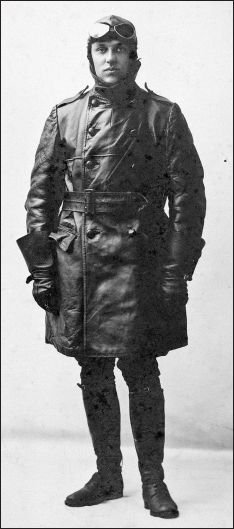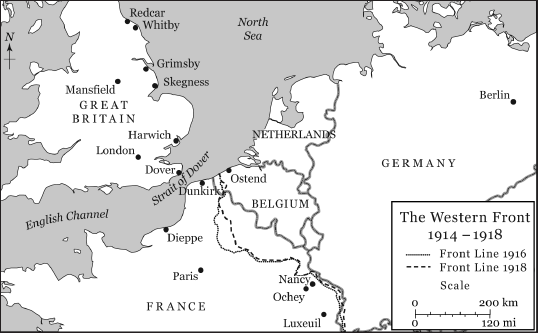Images and Documents

Image 1: A Royal Flying Corps (RFC) plane soars above the German trenches.

Image 2: Pilots needed warm jackets as well as helmets, goggles and gloves. The silk scarf many flyers wore was used to wipe engine oil from their goggles.

Image 3: The Curtiss JN-4 (Jenny 4) was the plane in which many RNAS pilots did their initial training. This formation is flying above a bank of clouds.

Image 4: An airman in a Curtiss JN-4 (Jenny) training machine is learning to use the machine gun.

Image 5: Lt.-Colonel Raymond Collishaw, leader of the all-Canadian Black Flight squadron, was the first flyer to score 6 victories in one day.

Image 6: Lt.-Colonel William Avery “Billy” Bishop of the Royal Flying Corps was Canada’s top ace. He had incredible vision and seldom wore goggles.

Image 7: Pilots who were shot down could sometimes manage to land their planes relatively safely, though more serious crashes were common.

Image 8: Major W. G. “Billy” Barker sits in the cockpit of a Sopwith Camel. He downed 50 enemy aircraft.

Image 9: The huge German airships called Zeppelins (after their inventor) brought fear to the British people. This downed Zeppelin has had its outer “skin” burned away, revealing the frame inside.

Image 10: Posters such as this helped citizens know whether a plane or airship overhead was the enemy’s or their own.

Image 11: Two Sopwith Camels engage in a dogfight with the infamous Red Baron. This illustration shows the Red Baron (centre) being chased by Canadian pilot Arthur Roy Brown.

Image 12: Speed varies according to altitude and engine. Estimated endurance time is for cruising speed, not combat speed.

Image 13: Hundreds of Royal Air Force (RAF), Royal Flying Corps and RNAS air bases were clustered along England’s east coast, and in France. The map above shows some of them.